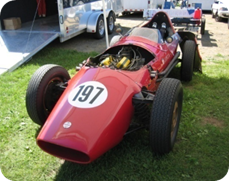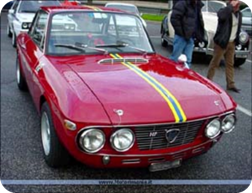| |
|
|
|
|
|
|
|
|
|
|
|
|
|
|
|
|
|
|
|
|
|
|
|
|
|
|
|
|
|
|
|
|
|
|
|
|
|
|
|
|
|
|
|
|
|
|
|
|
|
|
|
|
|
|
|
|
|
|
|
|
|
|
|
|
|
|
|
|
|
|
|
|
|
|
|
|
|
|
|
|
|
|
|
|
|
|
|
|
|
|
|
|
|
|
|
|
|
|
|
|
|
|
|
|
|
|
|
|
|
|
|
|
|
|
|
|
|
|
|
|
|
|
|
|
|
|
|
|
|
|
|
|
|
|
|
|
|
|
|
|
|
|
|
|
|
|
|
|
|
|
|
|
|
|
|
|
|
|
|
|
|
|
|
|
|
|
|
|
|
|
|
|
|
|
|
|
|
|
|
|
|
|
|
|
|
|
|
|
|
|
|
|
|
|
|
|
|
|
|
|
|
|
|
|
|
|
|
|
|
|
|
|
|
|
CONTENTS |
|
|
|
|
|
|
|
|
|
|
|
|
|
|
|
|
|
|
|
|
|
|
|
|
|
|
|
|
|
|
|
|
|
|
|
|
|
|
|
|
|
|
|
|
|
|
|
|
|
|
|
|
|
|
|
|
|
|
|
|
|
|
|
|
|
|
|
|
|
|
|
|
|
|
|
|
|
|
|
|
|
|
|
|
|
|
|
|
|
|
|
|
|
|
|
|
|
|
|
|
|
|
|
|
|
|
|
|
|
|
|
|
|
|
|
|
|
|
|
|
|
|
|
|
|
|
|
|
|
|
|
|
|
|
|
|
|
|
|
|
|
|
|
|
|
|
|
|
|
|
|
|
|
|
|
|
|
|
|
|
|
|
|
|
|
|
|
|
|
|
|
|
|
|
|
|
|
|
|
|
|
|
|
|
|
|
|
|
|
|
|
|
|
|
|
|
|
|
|
|
|
|
|
|
|
|
|
|
|
|
|
|
|
|
|
|
|
|
|
|
|
|
|
|
|
|
|
|
|
|
|
|
|
|
|
|
|
|
|
|
|
|
Under
construction |
|
|
|
|
|
|
|
|
|
|
|
|
|
|
|
|
|
|
|
|
|
|
|
|
|
|
|
|
Not finished |
|
|
|
|
|
|
|
|
|
|
|
|
|
|
|
|
|
|
|
|
|
|
|
|
|
|
|
|
Under
construction |
|
|
|
|
|
|
|
|
|
|
|
|
|
|
|
|
|
|
|
|
|
|
|
|
|
|
|
|
Under
construction |
|
|
|
|
|
|
|
|
|
|
|
|
|
|
|
|
|
|
|
|
|
|
|
|
|
|
|
|
Not finished |
|
|
|
|
|
|
|
|
|
|
|
|
|
|
|
|
|
|
|
|
|
|
|
|
|
|
|
|
Under
construction |
|
|
|
|
|
|
|
|
|
|
|
|
|
|
|
|
|
|
|
|
|
|
|
|
|
|
|
|
|
|
|
|
|
|
|
|
|
|
|
|
|
|
|
|
|
|
|
|
|
|
|
|
|
|
|
|
|
|

|
|
|
|
|
|
|
|
|
|
|
|
|
|
|
|
|
|
|
|
|
|
|
|
THE HF BADGE & THE RED ELEPHANT |
|
|
|
|
|
|
|
|
|
|
|
|
|
|
|
|
|
|
|
|
|
|
|
|
|
|
|
|
|
|
|
|
|
|
|
|
|
|
|
|
|
|

|
|
|
|
|
|
|
|
|
|
|
|
|
|
|
|
|
|
|
|
|
|
|
|
|
|
|
|
|
|
|
|
|
THE RED ELEPHANT |
|
|
|
|
|
|
|
|
|
|
|
|
|
|
|
|
|
|
|
|
|
|
|
|
|
|
|
There are many contradicting stories
with regards to the origin of the red elephant on all Lancia's competition
cars. We believe the following to be correct… |
|
|
|
|
|
|
|
|
|
In 1952, Scuderia Lancia competed in
the Giro di Sicily with an Aurelia Series 2 with a lowered roof line. One of
the drivers - Enrico Anselmi - had used an elephant as a personal emblem on
his car for some years. He allowed the Lancia team to use "his"
elephant. That was the first time the elephant was used on a Lancia
competition car. |
|
|
|
|
|
|
|
|
|
The symbol of the galloping elephant
apparently originates in Eastern mythology as a symbol of victory, providing
the trunk is stretched forward. This is how the elephant chosen by Gianni
Lancia was drawn, first in light blue and later as now in bright red. |
|
|
|
|
|
|
|
|
|
|
|
|
|
|
|
|
|
|
|
|
|
|
|
|

|
|
|
|
|
|
|
|
|
|
|
|
|
|
|
|
|
|
|
|
|
|
|
|
|
|
|
|
|
|
|
|
|
|
|
|
|
|
|
|
|
|
|
|
|
|
|
|
THE HIGH FIDELITY
LOGO |
|
|
|
|
|
|
|
|
|
|
|
|
|
|
|
|
|
|
|
|
|
|
|
|
|
|
|
In 1960, an exclusive club for loyal
Lancia owners - the Hi.Fi. Club - was
set up at the Geneva Motor Show by Lancia's Dr. Alfredo Della Seta.
"Hi.Fi." stood for High Fidelity and owners who had purchased at
least 6 new Lancia cars during any period were eligable for membership. Their
radiator badge was engraved with the initials of the owner and the year of
their first Lancia purchase. Stars corresponding to the number of Lancia cars
owned were attached to the badge (white star for one car, blue for five and
red for ten). |
|
|
|
|
|
|
|
|
|
|
|
|
|
|
|
|
|
|
|
|
|
|
|
|
|
In 1961, the Flaminia Coupes
competing in the European Touring car series (of which one was driven by
Giorgio Pianta, one of the engineers heavily involved with the development of
the later sports and rally cars) started using the letters H and F. |
|
|
|
|
|
|
|
|
|
|
|
|
|
|
|
|
|
|
|
|
|
|
|
|
|
In 1963, a group of amateur owners
set up the unofficial Lancia competition team. By 1965 this group grew into
the official Lancia Squadra Corsa which had Cesare Fiorio as a freelance
manager. His team combined the galloping red elephant and the letters "HF"
on their cars. |
|
|
|
|
|
|
|
|
|
|
|
|
|
|
|
|
|
|
|
|
|
|
|
|
|
In 1966, the letters "HF"
for the first time were included in the name of the legendary Fulvia HF coupe
which remained practically unbeatable on the world rally stages. The
incredible success of the Fulvia HF ensured the "HF" badge became
associated with high performance in motorsport and it was decided to make the
"HF" sign the official logo of the company's sports cars. This
tradition was further implemented when the mythical Stratos HF dominated
rallying between 1974 and 1978. |
|
|
|
|
|
|
|
|
|
|
|
|
|
|
|
|
|
|
|
|
|
|
|
|
|
In 1983, the HF logo was adopted
again for the Delta HF turbo and thereafter on the Delta HF 4WD and the HF
Integrale. With the introduction of the Evolution model of the Integrale, the
HF letters were combined with the galloping red elephant. The elephants had
been on the original badges for the Fulvia HF and the Stratos, however, at
that time there were four elephants displayed. |
|
|
|
|
|
|
|
|
|
|
|
|
|
|
|
|
|
|
|
|
|
|
|
|
|
|
|

|
|
|
|
|
|
|
|
FORMULA 1 - LANCIA D50 |
|
|
|
|
|
|
|
|
|
|
|
|
|
|
|
|
|
|
|
|
|
|
|
|
|
|
|
|
|
|
|
|
|
|
|
|
|
|
|
|
|
|
|
|
|
|
|
|
|
|
|
|
|
|
|
|
|
|
|
In 1953, after Lancia had been very
successful with its D23 and D24 road racers, Gianni Lancia decided to aim at
competing at the highest level of motorsport, a domain that was
"owned"by the giants of that era - the Ferrari Supersqualo and the Mercedes-Benz
W196. |
|
|
|
|
|
|
|
|
|
|
|
|
|
|
|
|
|
|
|
|
|
|
|
|
|
|
The most famous racing car designer
of that period was attracted - Vittorio Jano - the man responsible for the
legendary Alfa Romeos P2 and P3. By introducing innovative and revolutionary
design measurements, he created an absolute masterpiece - not only from a
technical point of view but also aesthetically the car turned out to be,
compared to its competitors, one of the most harmonious and proportionally
pleasing single seater racing cars of all time . The list of major
innovations is impressive: |
|
|
|
|
|
|
|
|
|
|
|
|
|
|
|
|
|
|
|
|
|
|
|
|
|
|
|
|
|
|
|
|
|
|
|
|
|
|
|
|
|
|
|
|
|
|
|
|
|
|
|
|
1. |
The engine was tilted 12 degrees to
its longitudinal axis. By doing this he was able to position the drive shaft
adjacent the driver's seat as opposed to under the car. In turn this meant
the frontal profile of the car was reduced and the centre of gravity was
lowered, resulting in a more aerodynamic design with better road holding. |
|
|
|
|
|
|
|
|
|
|
|
|
|
|
|
|
|
|
|
|
|
|
|
|
|
|
2. |
The gear box was combined with the
differential and the multi-disc oil bath clutch. The entire unit was located
transversely in the car to improve the weight distribution over both axles. |
|
|
|
|
|
|
|
|
|
|
|
|
|
|
|
|
|
|
|
|
|
|
|
|
|
|
3. |
Two external fuel tanks were fitted
between the front and rear wheels. This ensured again the weight of the fuel
(whether the tanks are empty of ful) was evenly distributed. This also
improved the aerodynamics of the car through continuity between front and
rear wheels. |
|
|
|
|
|
|
|
|
|
|
|
|
|
|
|
|
|
|
|
|
|
|
|
|
|
|
4. |
The 90 degrees V8 engine worked as a
stress member in the metal tube chassis - the front suspension components
were directly anchored to the engine. The use of the engine as a load bearing
component of the chassis, was light
years ahead of its time and is even today still used in Formula One. |
|
|
|
|
|
|
|
|
|
|
|
|
|
|
|
|
|
|
|
|
|
|
|
|
|
|
5. |
The 2.5 litre V8 engine had 4
overhead camshafts and twin ignition (new development!), developing (in its
latest configuration) 260bhp at 8200rpm. |
|
|
|
|
|
|
|
|
|
|
|
|
|
|
|
|
|
|
|
|
|
|
|
|
|
|
|
|
|
|
|
|
|
|
|
|
|
|
|
|
|
|
|
|
|
|
|
|
|
|
|
|
|
|
|
|
|
|
|
|
|
|
|
|
|
|
|
|
|
|
|
|
|
|
|
|
|
|
|
|
|
|
|
The car had to retire in its first 2
outings (Spain & Argentina). In the 1955 Grand Prix of Turin, Alberto
Ascari scored his first home win. In the Grand Prix of Pau, the car managed a
2nd, 4th and 5th place. At the circuit of Posillipo, Ascari again won
outright with Villoresi ending 4th. |
|
|
|
|
|
|
|
|
|
|
|
|
|
|
|
|
|
|
|
|
|
|
|
|
|
For the Monaco Gran Prix, Lancia
fielded 4 cars - Ascari, Villoresi, Castellotti and Chiron. After leading the
pack for 50 laps, Ascari slipped in a patch of oil and the D50 ended up in
the water. Castellotti took the lead but spun and had to be satisfied with
2nd place. The other cars finished 5th and 6th. |
|
|
|
|
|
|
|
|
|
|
|
|
|
|
|
|
|
|
|
|
|
|
|
|
|
Unfortunately Lancia was not to build
on the success of the D50. Four days after the Monaco Grand Prix, Alberto
Ascari died while testing a Ferrari Sport at the Monza race track. Gianni
Lancia had gambled the companies funds on his F1 adventure - the debt loaded
team, having lost its main race ace, had to sell the remaining cars
to....Ferrari. |
|
|
|
|
|
|
|
|
|
|
|
|
|
|
|
|
|
|
|
|
|
|
|
|
|
Although the D50 proved tremendously
successful, for Lancia it simply was the first sign the company paid more
attention to engineering masterpieces than ensuring the company's finances
were in balance. Ferrari happily took the winning cars and rebranded them as
Ferraris whilst introducing modifications. In 1956, Juan Miguel Fangio won
the Formula One World Championship in Jano's masterpiece....unfortunately for
Lancia for the wrong team! |
|
|
|
|
|
|
|
|
|
|
|
|
|
|
|
|
|
|
|
|
|
|
|
|
|
|
|

|
|
|
|
|
|
|
|
|
|
|
|
|
|
|
|
|
|
|
|
|
|
|
|
FORMULA JUNIOR - LANCIA DAGRADA |
|
|
|
|
|
|
|
|
|
|
|
|
|
|
|
|
|
|
|
|
|
|
|
|
|
|
|
|
|
|
|
|
|
|
|
|
|
|
|
|
|
|
|
|
|
|
|
|
|
|
|
|
|
|
|
|
|
|
|
In 1958, a new "Formula
Junior" class was introduced which became immensely popular. It resulted
in the development of many different concepts: constructors from America,
Italy, England, Germany and France used 1100cc engines from Fiats, Fords,
BMCs and Renaults and modified them to improve power. Angelo Dagrada of Milan
was one of those constructors and he produced some of the fastest cars. The
exact number of cars he produced is unknow but it is generally accepted he
built between 9 and 11 cars.
|
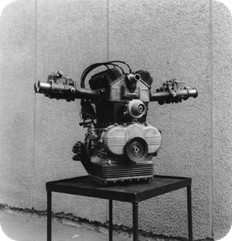
|
|
|
|
|
|
|
|
|
|
|
|
|
|
|
|
|
|
|
|
|
|
|
|
|
|
Angelo Dagrada was born in 1912 and
made a living as a mechanic. After WWII, he built a number of race cars for
the popular Italian 750 and 1100cc races. Making a name for himself, Dagrada
modified the Fiat 1100-Siata head and combustion chambers, resulting in some
specatuclar wins. Unfortunately, a number of road accidents in the early
1950's meant he had to cease further race car development until his return to
racing in 1955, mainly with Alfas.
|
|
|
|
|
|
|
|
|
|
|
|
|
|
|
|
|
|
|
|
|
|
|
|
|
|
|
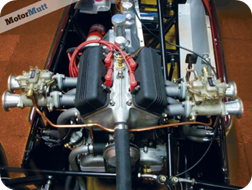 A young
Giancarlo Baghetti - part of the Baghetti family who owned a foundry in Milan
- showed keen interest in becoming a race car driver. Baghetti came to an
agreement with Dagrada for him to secretly modify his father's Alfa 1900
sedan at night, when his father was not around. When his father collected the
Alfa the next day, he could not figure out why it was so much faster. A young
Giancarlo Baghetti - part of the Baghetti family who owned a foundry in Milan
- showed keen interest in becoming a race car driver. Baghetti came to an
agreement with Dagrada for him to secretly modify his father's Alfa 1900
sedan at night, when his father was not around. When his father collected the
Alfa the next day, he could not figure out why it was so much faster.
|
|
|
|
|
|
|
|
|
|
|
|
|
|
|
|
|
|
|
|
|
|
|
|
|
|
|
|
Whilst Baghetti mainly drove Alfas
and Abarths on the local tracks, Dagrada was hoping to build a special car to
compete in the new Formula Junior. The usual set up for the cars in that
period - a tubular frame chassis combined with a Fiat 1100 front suspension
and a live axle at the rear - was simple, primitive, and not always
effective. While most other Italian Formula Junior constructors used the Fiat
engine, Dagrada decided to use the 1098cc Lancia Appia engine. The Appia unit
was a light weight, robust 10-degree V-4 cylinder cast-iron block with the
correct displacement, and was readily available. However, the design of the
intricate aluminum head prevented any attempt to make it a breather. Dagrada
virtually re-designed the head, creating new intake and exhaust ports,
resulting in a fire-breathing cross flow head with a Weber 38 DCO fitted to
each side of the block He subsequently tuned the exhausts, unevenly pulsating
through two megaphone exhaust pipes (although some used a combined system). These
modifications resulted in doubling the power from 48 bhp to nearly 100 bhp.
The whole set up was then covered with an aluminum body, similar in styling
to the 250F Maserati. |
|
|
|
|
|
|
|
|
|
|
|
|
|
|
|
|
|
|
|
|
|
|
|
|
|
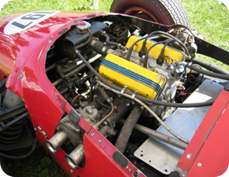 By
1960, the young Baghetti was keen to race in the new Formula Junior and
purchased a Dagrada from his old friend. He won the first time out on March
27th at Monza and placed himself well in three other races, winning the
Vigorelli Trophy races on April 25th. In the spring of 1961, Baghetti was
approached by Enzo Ferrari. The rest is history..... By
1960, the young Baghetti was keen to race in the new Formula Junior and
purchased a Dagrada from his old friend. He won the first time out on March
27th at Monza and placed himself well in three other races, winning the
Vigorelli Trophy races on April 25th. In the spring of 1961, Baghetti was
approached by Enzo Ferrari. The rest is history..... |
|
|
|
|
|
|
|
|
|
|
|
|
|
|
|
|
|
|
|
|
|
|
|
|
|
So was the Dagrada, which, like so
many others, was made obsolete by the British rear-engine revolution. One of
the Dagradas, chassis number 009, was imported into the USA by Marty Biener
of Great Neck Long Island. The new owner drove it in a few races, and parked
it, eventually selling it in 1980 to Armand Giglio, an American Lancia
enthusiast. In 1988, Giglio persuaded the retired Baghetti to drive the car
at the Pittsburgh Vintage races. Despite a misfire, Baghetti finished in
front of the rest of the front-engined Juniors. "It's an old car,"
said Baghetti, "but I was very happy to race it again.
|
|
|
|
|
|
|
|
|
|
|
|
|
|
|
|
|
|
|
|
|
|
|
|
|
|
|
Where are the cars now |
|
|
|
|
|
|
|
|
|
|
|
|
|
|
|
|
|
|
|
|
|
|
|
|
|
|
|
|
Dagrada probably made 9 front-engined
cars and 1 rear engined car. The rear
engined car was restored and was displayed at Padova in 2010. It is part of a
private Italian collection. |
|
|
|
|
|
|
|
|
|
|
|
|
|
|
|
|
|
|
|
|
|
|
|
|
|
|
It is possible he produced an
eleventh car as a duplicate chassis number, and that this car now may be in a
museum in Sicily. But no one is sure if this is a genuine car or was made up
later from parts - because it has not been possible to inspect it.
|
|
|
|
|
|
|
|
|
|
|
|
|
|
|
|
|
|
|
|
|
|
|
|
|
|
|
1. |
Chassis 001 - Is in Europe and is
being used and raced |
|
|
|
|
|
|
|
|
|
|
|
|
|
|
|
|
|
|
|
|
|
|
|
|
|
|
2. |
Chassis 002 - Was the Baghetti car
and is missing (unless this is actually the one in Sicily) |
|
|
|
|
|
|
|
|
|
|
|
|
|
|
|
|
|
|
|
|
|
|
|
|
|
|
3. |
Chassis 003 - Is in Europe and is
being used and raced. It was for sale quite recently. |
|
|
|
|
|
|
|
|
|
|
|
|
|
|
|
|
|
|
|
|
|
|
|
|
|
|
4. |
Chassis 004 - Still exists but was
crashed |
|
|
|
|
|
|
|
|
|
|
|
|
|
|
|
|
|
|
|
|
|
|
|
|
|
|
5. |
Chassis 005 - Was crashed, James
Steerman owns some of the parts from this car, including the Dagrada
head. |
|
|
|
|
|
|
|
|
|
|
|
|
|
|
|
|
|
|
|
|
|
|
|
|
|
|
6. |
Chassis 006 - Is in Europe and is
being used and raced. It came back from the US as a rolling chassis in 2001
and was restored to look like the Baghetti car, which it is not. |
|
|
|
|
|
|
|
|
|
|
|
|
|
|
|
|
|
|
|
|
|
|
|
|
|
|
7. |
Chassis 007 - Still exists but was
crashed |
|
|
|
|
|
|
|
|
|
|
|
|
|
|
|
|
|
|
|
|
|
|
|
|
|
|
8. |
Chassis 008 - Still exists but was
crashed |
|
|
|
|
|
|
|
|
|
|
|
|
|
|
|
|
|
|
|
|
|
|
|
|
|
|
9. |
Chassis 009 - Is owned by James Steerman (he bought it
from Giglio) |
|
|
|
|
|
|
|
|
|
|
|
|
|
|
|
|
|
|
|
|
|
|
|
|
|
|
About the crashed cars - chassis 004,
007 and 008: |
|
|
|
|
|
|
|
|
|
|
|
|
|
|
|
|
|
|
|
|
|
|
|
|
|
|
|
Two of them are largely incomplete
and would present extremely challenging restoration projects.
|
|
|
|
|
|
|
|
|
|
|
|
|
|
|
|
|
|
|
|
|
|
|
|
|
|
|
One of them will almost certainly be
restored by the current owner,
|
|
|
|
|
|
|
|
|
|
|
|
|
|
|
|
|
|
|
|
|
|
|
|
|
|
|
|

|
|
|
|
|
|
|
|
|
|
|
|
|
|
|
|
|
|
|
|
|
|
|
|
RALLY - SUCCES STORY OF 11 WRC TITLES |
|
|
|
|
|
|
|
|
|
|
|
|
|
|
|
|
|
|
|
|
|
|
|
|
|
|
|
|
|
|
|
|
|
|
|
|
|
|
|
|
|
|
|
|
|
|
|
|
|
|
|
|
|
|
|
|
|
|
|
Lancia has a long history in racing
and has been extremely successful, especially in the WORLD RALLY
CHAMPIONSHIPS. The title was first won by the legendary Fulvia HF 1.6 in
1972, then between 1974 and 1976 by the Stratos (with help from the Fulvia in
74), and again in 1983 by the Lancia 037, the only 2-wheel drive rally car to
ever beat the legendary Audi Quatro. In 1984 Audi took revenge and won by a
narrow margin which started the era of the four-wheel drive rally cars.
Lancia replied quickly and totally dominated the WRC competition between 1987
and 1992. Unfortunately Fiat made Lancia cease their participation in the
following years..... |
|
|
|
|
|
|
|
|
|
|
|
|
|
|
|
|
|
|
|
|
|
|
|
|
|
|
|
|
|
|
|
|
|
|
|
|
|
|
|
|
|
|
|
|
|
|
|
|
|
|
|
|
|
|
|
|
Despite the fact Lancia has not
participated in the WORLD RALLY CHAMPIONSHIP FOR MANUFACTURERS since 1992, at
the end of 2003 they still had a massive overall lead of 28 points over Ford.
It will take many years for other manufacturers to surpass this….. |
|
|
|
|
|
|
|
|
|
|
|
|
|
|
|
|
|
|
|
|
|
|
|
|
|
|
|
|
|
|
|
|
|
|
|
|
|
|
|
|
|
|
|
|
|
|
|
|
|
|
|
|
|
|
|
|
1 |
Lancia |
74 |
|
|
|
|
|
|
|
|
|
|
|
|
|
|
|
|
|
|
|
|
|
|
|
|
|
|
|
2 |
Ford |
|
46 |
|
|
|
|
|
|
|
|
|
|
|
|
|
|
|
|
|
|
|
|
|
|
|
|
|
|
|
3 |
Peugeot |
45 |
|
|
|
|
|
|
|
|
|
|
|
|
|
|
|
|
|
|
|
|
|
|
|
|
|
|
|
4 |
Toyota |
43 |
|
|
|
|
|
|
|
|
|
|
|
|
|
|
|
|
|
|
|
|
|
|
|
|
|
|
|
5 |
Subaru |
39 |
|
|
|
|
|
|
|
|
|
|
|
|
|
|
|
|
|
|
|
|
|
|
|
|
|
|
|
6 |
Mitsubishi |
34 |
|
|
|
|
|
|
|
|
|
|
|
|
|
|
|
|
|
|
|
|
|
|
|
|
|
|
|
7 |
Audi |
|
24 |
|
|
|
|
|
|
|
|
|
|
|
|
|
|
|
|
|
|
|
|
|
|
|
|
|
|
|
8 |
Fiat |
|
21 |
|
|
|
|
|
|
|
|
|
|
|
|
|
|
|
|
|
|
|
|
|
|
|
|
|
|
|
9 |
Citroen |
10 |
|
|
|
|
|
|
|
|
|
|
|
|
|
|
|
|
|
|
|
|
|
|
|
|
|
|
|
10 |
Nissan/Datsun |
9 |
|
|
|
|
|
|
|
|
|
|
|
|
|
|
|
|
|
|
|
|
|
|
|
|
|
|
|
11 |
Alpine |
|
6 |
|
|
|
|
|
|
|
|
|
|
|
|
|
|
|
|
|
|
|
|
|
|
|
|
|
|
|
12 |
Opel |
|
6 |
|
|
|
|
|
|
|
|
|
|
|
|
|
|
|
|
|
|
|
|
|
|
|
|
|
|
|
13 |
Renault |
6 |
|
|
|
|
|
|
|
|
|
|
|
|
|
|
|
|
|
|
|
|
|
|
|
|
|
|
|
14 |
Saab |
|
4 |
|
|
|
|
|
|
|
|
|
|
|
|
|
|
|
|
|
|
|
|
|
|
|
|
|
|
|
|
|
|
|
|
|
|
|
|
|
|
|
|
|
|
|
|
|
|
|
|
|
|
|
|
|
|
|
|
|
|
1968 |
Ford GB |
1986 |
Peugeot |
|
|
|
|
|
|
|
|
|
|
|
|
|
|
|
|
|
|
|
|
|
|
|
|
|
|
1969 |
Ford Europe |
1987 |
Lancia (Delta) |
|
|
|
|
|
|
|
|
|
|
|
|
|
|
|
|
|
|
|
|
|
|
|
|
|
|
1970 |
Porsche |
1988 |
Lancia (Delta) |
|
|
|
|
|
|
|
|
|
|
|
|
|
|
|
|
|
|
|
|
|
|
|
|
|
|
1971 |
Alpine Renault |
1989 |
Lancia (Delta) |
|
|
|
|
|
|
|
|
|
|
|
|
|
|
|
|
|
|
|
|
|
|
|
|
|
|
1972 |
Lancia (Fulvia) |
1990 |
Lancia (Delta) |
|
|
|
|
|
|
|
|
|
|
|
|
|
|
|
|
|
|
|
|
|
|
|
|
|
|
1973 |
Alpine Renault |
1991 |
Lancia (Delta) |
|
|
|
|
|
|
|
|
|
|
|
|
|
|
|
|
|
|
|
|
|
|
|
|
|
|
1974 |
Lancia (Fulvia and Stratos) |
1992 |
Lancia (Delta) |
|
|
|
|
|
|
|
|
|
|
|
|
|
|
|
|
|
|
|
|
|
|
|
|
|
|
1975 |
Lancia (Stratos) |
1993 |
Toyota |
|
|
|
|
|
|
|
|
|
|
|
|
|
|
|
|
|
|
|
|
|
|
|
|
|
|
1976 |
Lancia (Stratos) |
1994 |
Toyota |
|
|
|
|
|
|
|
|
|
|
|
|
|
|
|
|
|
|
|
|
|
|
|
|
|
|
1977 |
Fiat |
|
1995 |
Subaru |
|
|
|
|
|
|
|
|
|
|
|
|
|
|
|
|
|
|
|
|
|
|
|
|
|
|
1978 |
Fiat |
|
1996 |
Subaru |
|
|
|
|
|
|
|
|
|
|
|
|
|
|
|
|
|
|
|
|
|
|
|
|
|
|
1979 |
Ford |
|
1997 |
Subaru |
|
|
|
|
|
|
|
|
|
|
|
|
|
|
|
|
|
|
|
|
|
|
|
|
|
|
1980 |
Fiat |
|
1998 |
Mitsubishi |
|
|
|
|
|
|
|
|
|
|
|
|
|
|
|
|
|
|
|
|
|
|
|
|
|
|
1981 |
Talbot |
|
1999 |
Toyota |
|
|
|
|
|
|
|
|
|
|
|
|
|
|
|
|
|
|
|
|
|
|
|
|
|
|
1982 |
Audi |
|
2000 |
Peugeot |
|
|
|
|
|
|
|
|
|
|
|
|
|
|
|
|
|
|
|
|
|
|
|
|
|
|
1983 |
Lancia (037) |
2001 |
Peugeot |
|
|
|
|
|
|
|
|
|
|
|
|
|
|
|
|
|
|
|
|
|
|
|
|
|
|
1984 |
Audi |
|
2002 |
Peugeot |
|
|
|
|
|
|
|
|
|
|
|
|
|
|
|
|
|
|
|
|
|
|
|
|
|
|
1985 |
Peugeot |
2003 |
Citroen |
|
|
|
|
|
|
|
|
|
|
|
|
|
|
|
|
|
|
|
|
|
|
|
|
|
|
|
|

|
|
|
|
|
|
|
|
|
|
|
|
|
|
|
|
|
|
|
|
|
|
|
|
RALLY - FULVIA HF 1.3 & 1.6 |
|
|
|
|
|
|
|
|
|
|
|
|
|
|
|
|
|
|
|
|
|
|
|
|
|
|
|
|
|
|
|
|
|
|
|
|
|
|
|
|
|
|
|
|
|
|
|
|
|
|
|
|
|
|
|
|
|
|
|
In 1965, Lancia launched the Fulvia
coupe. It's life started as a 1200cc road car but by 1967, Lancia developed a
Fulvia 1.3
HF (1300cc) model which started
competing on the world stage, mainly in rallies. In its first 2 seasons -
which was merely a trial and error phase for Lancia - the Fulvia HF 1.3
managed to win its class in the European Touring Car Championship (1967,
driven by Claudio Maglioli) and the European Rally Championship (1969, driven
by Harry Karlstrom). |
|
|
|
|
|
|
|
|
|
|
|
|
|
|
|
|
|
|
|
|
|
|
|
|
|
|
When Lancia developed its successor,
the Fulvia 1.6 HF (1600cc), it created the car with competition in mind: |
|
|
|
|
|
|
|
|
|
|
|
|
|
|
|
|
|
|
|
|
|
|
|
|
|
|
1. |
The central front lights were
enlarged to improve visibility during night stages. The car received the
nickname "Fanalone" which meant "large headlights" but
also could refer to a large breasted woman…. |
|
|
|
|
|
|
|
|
|
|
|
|
|
|
|
|
|
|
|
|
|
|
|
|
|
|
2. |
The wheel arch extensions allowed
larger tyres to be fitted |
|
|
|
|
|
|
|
|
|
|
|
|
|
|
|
|
|
|
|
|
|
|
|
|
|
|
3. |
The rev counter indicated a maximum
of 10,000rpm and the speedo went up to 220 km/h |
|
|
|
|
|
|
|
|
|
|
|
|
|
|
|
|
|
|
|
|
|
|
|
|
|
|
4. |
A 5 speed gearbox with a shorter gear
lever was fitted. Note however the first 1002 cars received a gearbox which
was merely a development of the older 4 speed box. Only the last 276 cars
received the full spec 5 speed. |
|
|
|
|
|
|
|
|
|
|
|
|
|
|
|
|
|
|
|
|
|
|
|
|
|
|
5. |
The front wheels were given 1 degree
of extra camber |
|
|
|
|
|
|
|
|
|
|
|
|
|
|
|
|
|
|
|
|
|
|
|
|
|
|
6. |
The engine was again a narrow V4
engine but with a capacity of 1584cc, producing 115 bhp in standard road
going form, 132 bhp at 6,600rpm with the factory provided elaboration kit
fitted and 158 bhp at 7,500rpm in full blown race form. |
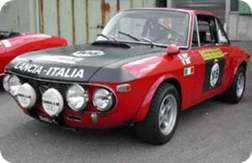
|
|
|
|
|
|
|
|
|
|
|
|
|
|
|
|
|
|
|
|
|
|
|
|
|
|
Although the development of the
Fulvia was not purely driven by competion like its successors (Stratos and
037), it was clear Lancia meant serious business! |
|
|
|
|
|
|
|
|
|
|
|
|
|
|
|
|
|
|
|
|
|
|
|
|
|
|
Through the continued success of the
1.3 HF and 1.6 HF, by 1972 Lancia managed to secure Marlboro as its main
sponsor. This obviously boosted Lancia's financial position and after Lancia
scored 7 outright victories, it was able to claim the World Championships for
Makes (now called WRC), its first world title (10 more were to follow). |
|
|
|
|
|
|
|
|
|
|
|
|
|
|
|
|
|
|
|
|
|
|
|
|
|
|

|
|
|
|
|
|
|
|
|
|
|
|
|
|
|
|
|
|
|
|
|
|
|
|
|
|
|
|
|
|
|
|
Lancia's main driver in this era was
Sandro Munari - the legendary driver who later claimed more faim through his
many victories in the Stratos. |
|
|
|
|
|
|
|
|
|
|
|
|
|
|
|
|
|
|
|
|
|
|
|
|
|
|
|
|
Between 1969 andf 1971, all factory
competition cars were prepared by Claudio Maglioli. These special Fulvias -
17 in total - were made more robust by providing anti roll bars and dome
bars. On top of that Maglioli squeezed all the power he could get out of the
1600cc, trodding on the fine line between ultimate power and reliability... |
|
|
|
|
|
|
|
|
|
|
|
|
|
|
|
|
|
|
|
|
|
|
|
|
|
|
|
|
Six years the little Fulvia competed
with tremendous success. Although often overlooked, it was the 1.6 HF that
competed the first half of 1974 and provided the basis for the WRC title the
Stratos claimed at the end of that season…. |
|
|
|
|
|
|
|
|
|
|
|
|
|
|
|
|
|
|
|
|
|
|
|
|
|
|
|
|
|
|
|
|
|
|
|
|
|
|
|
|
|
|
|
|
|
|
|
|
|
|
|
|
|
|
|
|
|
|
|
|
|
|
|
|
|
|
|
|
|
|
|
|
|
|
|
|
|
|
|
|
|
|
|
|
|
|
|
|
|
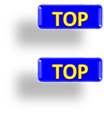
|
|
|
|
|
|
|
|
|
|
|
|
|
|
|
|
|
|
|
|
|
|
|
|
RALLY - STRATOS HF |
|
|
Under
construction |
|
|
|
|
|
|
|
|
|
|
|
|
|
|
|
|
|
|
|
|
|
|
|
|
|
|
|
|
|
|
|
|
|
|
|
|
|
|
|
|
|
|
|
|
|
|
|
|
|
|
|
|
|
|
|
|
|
|
|
|
|
|
|
|
|
|
|
|
|
|
|
|
|
|
|
|
|
|
|
|
|
|
RALLY - 037 RALLY |
|
|
Not finished |
|
|
|
|
|
|
|
|
|
|
|
|
|
|
|
|
|
|
|
|
|
|
|
|
|
|
|
|
|
|
|
|
|
|
|
|
|
|
|
|
|
|
|
|
|
|
|
|
|
|
|
|
|
|
|
|
|
|
|
|
|
|
|
|
|
|
|
|
|
|
|
|
|
|
|
|
|
|
|
|
|
|
|
|
|
|
|
In 1980 - 1981, Lancia started the
development of the Montecarlo Rally car (Lancia 037) to compete in the WORLD
RALLY CHAMPIONSHIP FOR MAKES. Initially 6 prototypes were made, followed by
217 Stradale versions to ensure homologation. |
|
|
|
|
|
|
|
|
|
|
|
|
|
|
|
|
|
|
|
|
|
|
|
|
|
In 1982 the 037 EVO 8.1982 was launched,
aiming to further improve the car in order to win the WRC in 1983. The
037 EVO 8 delivered
Lancia a 9th place in 82 and a 1st place in 83. |
|
|
|
|
|
|
|
|
|
|
|
|
|
|
|
|
|
|
|
|
|
|
|
|
|
Because of the highly successful Audi
Quatro and 4WD Peugeot 205, Lancia re-engineered the car and launched the 037
EVO II 1984. Despite the 2WD nature of the car, the Lancia proved to be
unbeatable on Tarmac. However, because of its superior tracking on gravel,
Audi managed to claim first spot but only by a narrow margin. |
|
|
|
|
|
|
|
|
|
|
|
|
|
|
|
|
|
|
|
|
|
|
|
|
|
In 1985, Lancia used the (then
ageing) 037 EVO II for part of the season which gave them extra time to
develop the new Lancia Delta S4. This car was launched halfway 1985 and
Lancia managed again to secure a second place in the WRC. This was the last
year the 037 was used in the WRC competition. |
|
|
|
|
|
|
|
|
|
|
|
|
|
|
|
|
|
|
|
|
|
|
|
|
|
The 037 was very successful on the
European stage. When it was launched in 1982, it ended the year in a
promising 3rd place. In 1983, 84 and 85 it
claimed 1st place and in 1986, the last year
the 037 was used in international rally events, it ended in 2nd place. |
|
|
|
|
|
|
|
|
|
|
|
|
|
|
|
|
|
|
|
|
|
|
|
|
|
|
|
|
|
|
|
|
|
|
|
|
|
|
|
|
|
|
|
|
|
|
|
|
|
|
|
|
|
|
|
|
|
|
|
|
|
|
|
|
|
|
|
|
|
|
|
|
|
|
|
|
|
|
|
|
|
|
|
|
|
|
|
YEAR |
NO BUILT |
ENGINE |
BHP |
RESULT |
COMPETITION |
|
|
|
|
|
|
|
|
|
|
|
|
|
|
|
|
|
|
|
|
|
|
|
|
|
|
|
|
|
|
|
|
|
|
|
|
|
|
|
|
|
|
|
|
|
|
|
|
|
|
|
|
|
|
|
|
80-81 |
6 |
037 prototype - 2000cc 16V DOHC supercharged |
205 |
|
|
|
|
|
|
|
|
|
|
|
|
|
|
|
|
|
|
|
|
|
|
|
|
|
|
|
|
|
|
|
|
|
|
|
|
|
|
|
|
|
|
|
|
|
|
|
|
|
|
|
|
|
|
|
|
|
|
82 |
217 |
037 stradale - 2000cc 16V DOHC supercharged |
205 |
|
|
|
|
|
|
|
|
|
|
|
|
|
|
|
|
|
|
|
|
|
|
|
|
|
|
|
|
|
|
|
|
|
|
|
|
|
|
|
|
|
|
|
|
|
|
|
|
|
|
|
|
|
|
|
|
|
|
82 |
20 |
037 EVO 8.1982 - 2000cc 16V DOHC supercharged |
310 |
9th |
World Rally Championship for makes |
|
|
|
|
|
|
|
|
|
|
|
|
|
|
|
|
|
|
|
|
|
|
|
|
|
|
|
|
|
3rd |
European Rally Championship for
drivers |
|
|
|
|
|
|
|
|
|
|
|
|
|
|
|
|
|
|
|
|
|
|
|
|
|
|
|
|
|
|
|
|
|
|
|
|
|
|
|
|
|
|
|
|
|
|
|
|
|
|
|
|
|
|
|
|
83 |
0 |
037 EVO 8.1982 - 2000cc 16V DOHC supercharged |
310 |
Worldchampion |
World Rally Championship for makes |
|
|
|
|
|
|
|
|
|
|
|
|
|
|
|
|
|
|
|
|
|
|
|
|
|
|
|
|
|
European Champion |
European Rally Championship for
drivers |
|
|
|
|
|
|
|
|
|
|
|
|
|
|
|
|
|
|
|
|
|
|
|
|
|
|
|
|
|
|
|
|
|
|
|
|
|
|
|
|
|
|
|
|
|
|
|
|
|
|
|
|
|
|
|
|
84 |
20 |
037 EVO II 1984 - 2111cc 16V DOHC supercharged |
325 |
2nd |
World Rally Championship for makes |
|
|
|
|
|
|
|
|
|
|
|
|
|
|
|
|
|
|
|
|
|
|
|
|
|
|
|
|
|
European Champion |
European Rally Championship for
drivers |
|
|
|
|
|
|
|
|
|
|
|
|
|
|
|
|
|
|
|
|
|
|
|
|
|
|
|
|
|
|
|
|
|
|
|
|
|
|
|
|
|
|
|
|
|
|
|
|
|
|
|
|
|
|
|
|
85 |
0 |
037 EVO II 1984 - 2111cc 16V DOHC supercharged |
340 |
2nd |
World Rally Championship for makes |
|
|
|
|
|
|
|
|
|
|
|
|
|
|
|
|
|
|
|
|
|
|
|
|
|
|
|
|
|
European Champion |
European Rally Championship for
drivers |
|
|
|
|
|
|
|
|
|
|
|
|
|
|
|
|
|
|
|
|
|
|
|
|
|
|
|
|
|
|
|
|
|
|
|
|
|
|
|
|
|
|
|
|
|
|
|
|
|
|
|
|
|
|
|
|
86 |
0 |
037 EVO II 1984 - 2111cc 16V DOHC supercharged |
340 |
2nd |
European Rally Championship for
drivers |
|
|
|
|
|
|
|
|
|
|
|
|
|
|
|
|
|
|
|
|
|
|
|
|
|
|
|
|
|
|
|
|
|
|
|
|
|
|
|
|
|
|
|
|
|
|
|
|
|
|
|
|
|
|
|
|
|
|
|
|
|
|
|
|
|
|
|
|
|
|
|
|
|
|
|
|
|
|
|
|
|
|
|
|
|
|
|
|
|
|
|
|
|
|
|
|
|
|
|
|
|
|
|
|
|
|
|
|
|
|
|
|
|
|
|
|
|
|
|
|
|
|
|
|
|
|
|
|
|
|
|
|
|
|
|
|
|
|
|
|
|
|
|
|
|
|
|
|
|
|
|

|
|
|
|
|
|
|
|
|
|
|
|
|
|
|
|
|
|
|
|
|
|
|
|
RALLY - DELTA S4 |
|
|
Under
construction |
|
|
|
|
|
|
|
|
|
|
|
|
|
|
|
|
|
|
|
|
|
|
|
|
|
|
|
|
|
|
|
|
|
|
|
|
|
|
|
|
|
|
|
|
|
|
|
|
|
|
|
|
|
|
|
|
|
|
|
|
|
|
|
|
|
|
|
|
|
|
|
|
|
|
|
|
|
|
|
|
|
|
RALLY - DELTA HF 4WD & HF INTEGRALE |
|
|
Under
construction |
|
|
|
|
|
|
|
|
|
|
|
|
|
|
|
|
|
|
|
|
|
|
|
|
|
|
|
|
|
|
|
|
|
|
|
|
|
|
|
|
|
|
|
|
|
|
|
|
|
|
|
|
|
|
|
|
|
|
|
|
|
|
|
|
|
|
|
|
|
|
|
|
|
|
|
|
|
|
|
|
|
|
ENDURANCE RACING - MONTECARLO TURBO |
|
|
Not finished |
|
|
|
|
|
|
|
|
|
|
|
|
|
|
|
|
|
|
|
|
|
|
|
|
|
|
|
|
|
|
|
|
|
|
|
|
|
|
|
|
|
|
|
|
|
|
|
|
|
|
|
|
|
|
|
|
The Montecarlo’s success in racing
started with the Pininfarina-Abarth 030 Prototype. It was first launched in
the 1974 Giro d’Italia where it came second to a Lancia Stratos. |
|
|
|
|
|
|
|
|
|
|
|
|
|
|
|
|
|
|
|
|
|
|
|
|
|
In 1979, Lancia developed the
Montecarlo Turbo to compete in the WORLD CHAMPIONSHIP FOR MAKES GROUP 5
(Endurance racing). The 1425cc Turbo version, producing between 370 and 420
bhp (depending on gearing) instantly launched itself to the number 1 spot of
the “under 2 litre class”. With minor modifications this car again won in
1980 (beating Porsche by 4 points!) and in 1981.
|
|
|
|
|
|
|
|
|
|
|
|
|
|
|
|
|
|
|
|
|
|
|
|
|
|
A 1429cc model was launched to
compete in the “over 2 litre class” where it won 2 races. In 1981 a 1775cc
model was developed, producing 490 bhp. Unfortunately at the end of 1982, the
regulations for endurance racing changed and the Montecarlo Turbo became
obsolete. |
|
|
|
|
|
|
|
|
|
|
|
|
|
|
|
|
|
|
|
|
|
|
|
|
|
|
|
|
|
|
|
|
|
|
|
|
|
|
|
|
|
|
|
|
|
|
|
|
|
|
|
|
|
|
|
|
YEAR |
NO BUILT |
ENGINE |
BHP |
RESULT |
COMPETITION |
|
|
|
|
|
|
|
|
|
|
|
|
|
|
|
|
|
|
|
|
|
|
|
|
|
|
|
|
|
|
|
|
|
|
|
|
|
|
|
|
|
|
|
|
|
|
|
|
|
|
|
|
|
|
|
|
79 |
3 |
1425cc turbo |
370 to 420 |
Worldchampion |
World Championship of makes Group 5
under 2 litre |
|
|
|
|
|
|
|
|
|
|
|
|
|
|
|
|
|
|
|
|
|
|
|
|
|
|
|
|
|
|
|
|
|
|
|
|
|
|
|
|
|
|
|
|
|
|
|
|
|
|
|
|
|
|
|
|
80 |
5 |
1425cc turbo |
410 |
Worldchampion |
World Championship of makes Group 5
under 2 litre |
|
|
|
|
|
|
|
|
|
|
|
|
|
|
|
|
|
|
|
|
|
|
|
|
|
|
|
1425cc turbo |
410 |
German Champion |
German Group 5 Championship under 2
litre |
|
|
|
|
|
|
|
|
|
|
|
|
|
|
|
|
|
|
|
|
|
|
|
|
|
|
|
1429cc turbo |
410 |
Won 2 races! |
World Championship of makes Group 5
over 2 litre |
|
|
|
|
|
|
|
|
|
|
|
|
|
|
|
|
|
|
|
|
|
|
|
|
|
|
|
|
|
|
|
|
|
|
|
|
|
|
|
|
|
|
|
|
|
|
|
|
|
|
|
|
|
|
|
|
81 |
0 |
1425cc turbo |
425 to 440 |
Worldchampion |
FIA World Endurance Championship |
|
|
|
|
|
|
|
|
|
|
|
|
|
|
|
|
|
|
|
|
|
|
|
|
|
|
|
1425cc turbo |
425 to 440 |
? |
German Group 5 Championship under 2
litre |
|
|
|
|
|
|
|
|
|
|
|
|
|
|
|
|
|
|
|
|
|
|
|
|
|
|
|
1429cc turbo |
425 to 440 |
? |
World Championship of makes Group 5
over 2 litre |
|
|
|
|
|
|
|
|
|
|
|
|
|
|
|
|
|
|
|
|
|
|
|
|
|
|
|
1775cc turbo |
490 |
? |
World Championship of makes Group 5
over 2 litre |
|
|
|
|
|
|
|
|
|
|
|
|
|
|
|
|
|
|
|
|
|
|
|
|
|
|
|
|
|
|
|
|
|
|
|
|
|
|
|
|
|
|
|
|
|
|
|
|
|
|
|
|
|
|
|
|
82 |
3 |
1425cc turbo |
425 to 440 |
? |
FIA World Endurance Championship Group
C |
|
|
|
|
|
|
|
|
|
|
|
|
|
|
|
|
|
|
|
|
|
|
|
|
|
|
|
|
|
|
|
|
|
|
|
|
|
|
|
|
|
|
|
|
|
|
|
|
|
|
|
|
|
|
|
|
|
|
|
|
|
|
|
|
|
|
|
|
|
|
|
|
|
|
|
|
|
|
|
|
|
|
|
|
|
|
|
|
|

|
|
|
|
|
|
|
|
|
|
|
|
|
|
|
|
|
|
|
|
|
|
|
|
ENDURANCE RACING - LC1 & LC2 |
|
|
Under
construction |
|
|
|
|
|
|
|
|
|
|
|
|
|
|
|
|
|
|
|
|
|
|
|
|
|
|
|
|
|
|
|
|
|
|
|
|
|
|
|
|
|
|
|
|
|
|
|
|
|
|
|
|
|
|
|
|
|
|
|
|
|
|
|
|
|
|
|
|
|
|
|
|
|
|
|
|
|
|
|
|
|
|
|
|
|
|
|
|
|
|
|
|
|
|
|
|
|
|
|
|
|
|
|
|
|
|
|
|
|
|
|
|
|
|
|
|
|
|
|
|
|
|
|
|
|
|
|
|
|
|
|
|
|
|
|
|
|
|
|
|
|
|
|
|
|
|
|
|
|
|
|
|
|
|
|
|
|
|
|
|
|
|
|
|
|
|
|
|
|
|
|
|
|
|
|
|
|
|
|
|
|
|
|
|
|
|
|
|
|
|
|
|
|
|
|
|
|
|
|
|
|
|
|
|
|
|
|
|
|
|
|
|
|
|
|
|
|
|
|
|
|
|
|
|
|
|
|
|
|
|
|
|
|
|
|
|
|
|
|
|
|
|
|
|
|
|
|
|
|
|
|
|
|
|
|
|
|
|
|
|
|
|
|
|
|
|





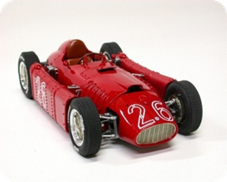
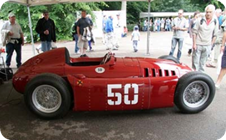
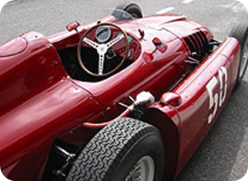
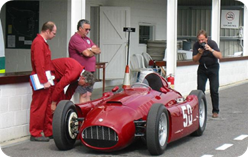


 A young
Giancarlo Baghetti - part of the Baghetti family who owned a foundry in Milan
- showed keen interest in becoming a race car driver. Baghetti came to an
agreement with Dagrada for him to secretly modify his father's Alfa 1900
sedan at night, when his father was not around. When his father collected the
Alfa the next day, he could not figure out why it was so much faster.
A young
Giancarlo Baghetti - part of the Baghetti family who owned a foundry in Milan
- showed keen interest in becoming a race car driver. Baghetti came to an
agreement with Dagrada for him to secretly modify his father's Alfa 1900
sedan at night, when his father was not around. When his father collected the
Alfa the next day, he could not figure out why it was so much faster.
 By
1960, the young Baghetti was keen to race in the new Formula Junior and
purchased a Dagrada from his old friend. He won the first time out on March
27th at Monza and placed himself well in three other races, winning the
Vigorelli Trophy races on April 25th. In the spring of 1961, Baghetti was
approached by Enzo Ferrari. The rest is history.....
By
1960, the young Baghetti was keen to race in the new Formula Junior and
purchased a Dagrada from his old friend. He won the first time out on March
27th at Monza and placed himself well in three other races, winning the
Vigorelli Trophy races on April 25th. In the spring of 1961, Baghetti was
approached by Enzo Ferrari. The rest is history.....
